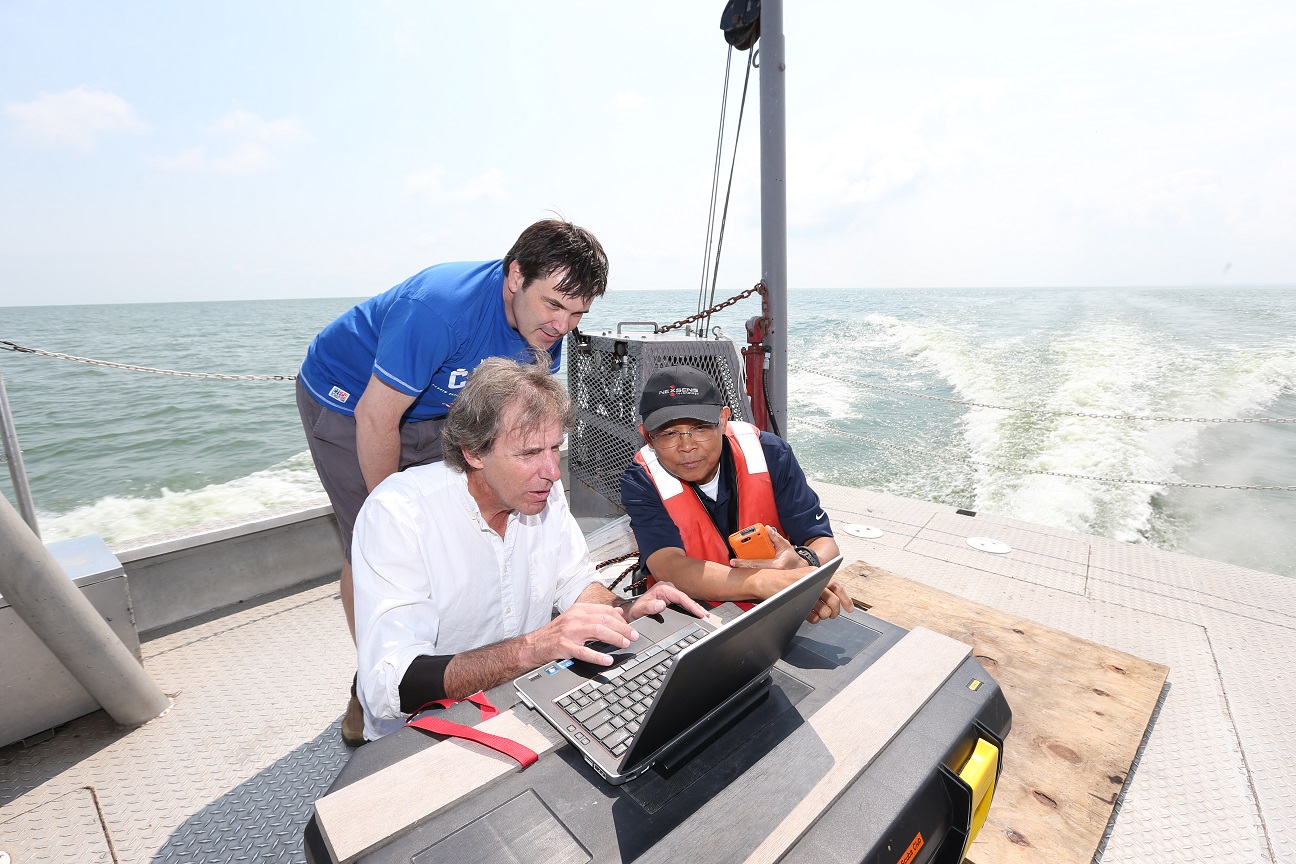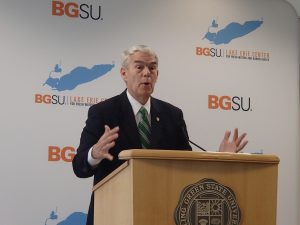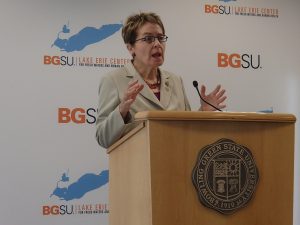
Northwest Ohio algal bloom research gets a boost
Watch video below of the announcement at Bowling Green State University.
After Lake Erie’s toxic algal blooms shut down Toledo’s water supply in 2014, scientists knew they needed to know more about them, and they knew existing research about the problem in northwest Ohio could be better coordinated.
“We didn’t have the capabilities for all the different toxin types,” said George Bullerjahn, professor of research excellence in biology at BGSU.

Dr. George Bullerjahn works with Timothy Davis, and Taylor Tuttle, Photo by BGSU via Sarah Bednarski
With additional funding from the Ohio Department of Higher Education, researchers from Bowling Green State University, the University of Toledo and the National Oceanic and Atmospheric Administration started working together. One of their efforts: coordinated, weekly collection and analysis of nutrients and toxins in water from three areas of western Lake Erie.
“We all go out at the same time, access regular sites every week, process the sites using common methods, and then all the samples are shared,” Bullerjahn said. “We’re analyzing the whole water sample, we’re also filtering out the biomass, the algal and looking at that as well.”
The data collected are shared online, and numerous research papers have been published, he said, but more work is need to predict, prevent and mitigate the toxic algal blooms. They are appearing on other Great Lakes and estimated to cost billions worldwide each year.
A $5.2 million grant announced this week

Lake Erie shoreline touches Michigan, Ohio, Pennsylvania New York and Ontario, Canada.
A $5.2 million grant announced this week will expand on the northwest Ohio work through the formation of the Lake Erie Center for Fresh Waters and Human Health, an effort led by BGSU. Nine institutions will collaborate on scientific and socioeconomic issues related to the blooms, and part of the project will include citizen engagement — training citizen scientists to collect samples, for example. The funding comes from the National Science Foundation and the National Institute of Environmental Health Sciences.
Researchers at other institutions, which are not formal partners of the new center, also will

Ohio Sen. Randy Gardner said Lake Erie-related efforts have been bi-partisan discussions, Photo by Sandra Svoboda.
be able to access data the center collects and use it for their own research. “Everything we find, all the metadata from all our samples, will be available to the scientific community whether they’re part of the center or not,” said Bullerjahn, who will lead the center.
Republican State Sen. Randy Gardner, who represents parts of Toledo and northwest Ohio, credited an “even mix” of Democratic and Republican state and federal legislators for supporting research about algal blooms.
“This almost exclusively has become a bi-partisan issue,” he said. “Republicans and Democrats have found a way to say, ‘We need to work together on this issue.’”

U.S. Rep. Marcy Kaptur linked agriculture, weather and water conditions, Photo by Sandra Svoboda
Democratic U.S. Rep. Marcy Kaptur, whose district includes the northwest Ohio shoreline along Lake Erie, said the work researchers will do will help understanding about how the local agricultural industry affects water quality and what other factors are at play in the watershed dynamics.
“We have to feed the American people,” Kaptur said. “But we haven’t figured out the proper relationship between the land and the water. So truly this is a 21st-century effort, and one I know we can solve. It’s a solvable problem, working together.”
Featured Image: Dr. Mike McKay and Dr. George Bullerjahn review water results, Photo by BGSU via Sarah Bednarski




